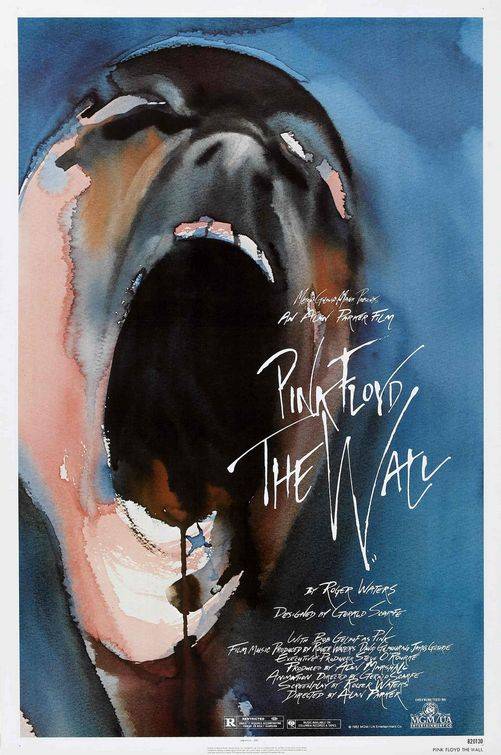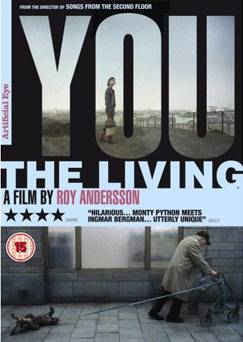It’s that time again, when hundreds of people from all over the world descend upon Champaign-Urbana to partake in a marathon of obscure and overlooked films hand-picked by the Pulitzer Prize-winning film critic Roger Ebert at the historic Virginia Theatre. This will be my seventh year in attendance; Ebertfest is one of my favorite times of year.
I write this now after two nights of despicably poor sleep. It’s not the best way to begin a festival that has yet to show eleven more films, but last night’s quality of sleep may be partially blamed on the first time two movies were shown on opening day. This is how it went:
5:30 p.m.: I arrive at the Virginia Theatre to stand in line with my husband, who, it is in my opinion, is dangerously close to reaching levels of insanity by insisting he come to the theater four hours before the first film begins. In his defense, it’s a sunny, perfect day outside, and he wasn’t the first person in line.
Directly in front of us are a group of four high school students from Oregon who have made the trip out of devotion to their favorite film critic. They already wear the official gray T-shirt bearing the festival’s name and Ebert’s clever self-portrait sketch of a movie critic poised over a notepad in a sparsely-filled movie theater. They’ve spent six months planning the trip; brothers Tyler and Dana Henson, Bret Bynum, and Mike Millan have spent the day thus far taking somewhere around 200 photos of sights that remind them of the movies: Busey Bank (Gary Busey), Neil Street (Sam Neill), etc. These are some of Ebert’s most enthusiastic fans, and it is their first time at the festival. I am looking at the future of Ebertfest, and it is bright and full of energy.
6:15 p.m.: After much worrying if projectionist James Bond has wandered off on a top secret mission and has forgotten to let the theater staff know it’s safe to let the teeming line wrapped around the building inside, we finally start to move. The sprint for the coveted seats begins.
After we procure the same seats we sit in each year, with some difficulty here and there, we are finally able to speak with our two friends, Karen and Bob, whom we have come to know over the years while scrambling for the same seats in front of each other.
I lose track of the time. So much for blogging efficiently. My sharp-eyed husband spots a black La-Z Boy recliner in the shadows on the corner of the stage, and our hopes are raised that Ebert himself will join in the panel discussions this year. Soon after this observation, a media frenzy takes over the aisle in front of the first row by the stage. Chaz Ebert, Roger’s wife, takes the stage and officially opens the festival; she shows off her high heels with a little strut across the stage and explains she wore them just for us tonight. Chaz introduces Roger onto the stage, who is given a standing ovation. It’s so good to have him present at the festival; already the energy is electric. Seconds later, Illinois governor Pat Quinn graces the stage and reads a flowery proclamation on Ebert’s accomplishments, dubbing the day “Ebertfest Day.” It’s a nice tribute to a man who has done so much for film and has been a champion in his own personal struggles.
Nate Kohn introduces the first film, Pink Floyd The Wall with the knowledge that he has only seen the movie once and that, “I trust that all of you were in the same condition when I first saw it.” I wonder how an audience half-consisting of people aged fifty and up are going to welcome this infamous stoner movie. Kohn explains that while a 70mm print was flown in from a film institute in Britain, and was the only 70mm print in existence, they judged it to be “too pink” to screen, and so they have decided to show a 35mm print from Warner Bros. instead. At first, I thought this was just a bad pun, but it seems the film had deteriorated into an ironically pinkish form of itself. Chaz exclaims, “If you don’t have a good time, I guarantee your money back!”
 7:00 p.m.-ish: A short film is screened before Pink Floyd The Wall, featuring street musicians, buskers, and even a Zuni American Indian tribe all performing the song “Stand By Me.” It is a touching, beautiful little film. The latter movie turns that sweet, soul-touching note on its head and terrorizes it with a hammer. I can see why a person would want to be high while watching The Wall. I can also see how watching it while on any form of drugs would be a very bad idea. The imagery in the film wafts between intensely disturbing scenes of gore and sex to heart-breaking moments of realism. Generally, it is a surrealistic, haunting, hallucinatory ride through the imagination of Roger Waters and into the realm of insanity. I am impressed by the animation, the cinematography, and some of the vastly arranged scenes of everything from children lining up in disturbing masks to walk off into a meat grinder, to dead soldiers lying in piles in a fox hole. There are some stunning visuals here, and though it is slightly excruciating to watch, I’m happy I am able to view it on the massive Virginia screen for the first time.
7:00 p.m.-ish: A short film is screened before Pink Floyd The Wall, featuring street musicians, buskers, and even a Zuni American Indian tribe all performing the song “Stand By Me.” It is a touching, beautiful little film. The latter movie turns that sweet, soul-touching note on its head and terrorizes it with a hammer. I can see why a person would want to be high while watching The Wall. I can also see how watching it while on any form of drugs would be a very bad idea. The imagery in the film wafts between intensely disturbing scenes of gore and sex to heart-breaking moments of realism. Generally, it is a surrealistic, haunting, hallucinatory ride through the imagination of Roger Waters and into the realm of insanity. I am impressed by the animation, the cinematography, and some of the vastly arranged scenes of everything from children lining up in disturbing masks to walk off into a meat grinder, to dead soldiers lying in piles in a fox hole. There are some stunning visuals here, and though it is slightly excruciating to watch, I’m happy I am able to view it on the massive Virginia screen for the first time.
The panel discussion that follows is a little awkward, but interesting. It is revealed that Pink Floyd The Wall is semi-autobiographical for Roger Waters. One of the panelists, who has endured the movie for the first time, declares that “rock and roll prevented World War III” because creating loud music gave kids an outlet into rage without having to kill anybody. Kudos, rock and roll! The first guy who gets in a question for the Q&A — I kid you not — sounds as high as a kite. No one can understand what the heck he is talking about and moves on.
 10:00 p.m.-ish: The next film, You, The Living, is introduced by film critic Michael Phillips. It is a series of vignettes connected by a theme of misery or self-importance. The first half of the Swedish film is received well by the audience, who seem desperate to laugh after the uncomfortable psychedelic ride from The Wall. They laugh perhaps a little too much, even during scenes that would normally come off as sad or depressing if not surrounded by hundreds of other giggling people. One of the most disturbing, yet hilarious, scenes is of a completely nude, overweight woman, save for a golden helmet, who is tediously having sex with a corpse-like, unmoving man. While the woman acts “into it,” the man does nothing but lie motionless and talk about his bad investments and money problems. Most of the people in the film are so self-involved, they never make anyone else happy because they’re too busy feeling sorry for themselves. The film is actually a quirky, entertaining film in its weirdness, despite the sometimes depressing vignettes. The most memorable scene features a dream sequence of a man who wants to “liven up a party,” and attempts to yank a table cloth out from under a beautifully set table. After it goes horribly wrong, he is tried and sentenced to die in the electric chair.
10:00 p.m.-ish: The next film, You, The Living, is introduced by film critic Michael Phillips. It is a series of vignettes connected by a theme of misery or self-importance. The first half of the Swedish film is received well by the audience, who seem desperate to laugh after the uncomfortable psychedelic ride from The Wall. They laugh perhaps a little too much, even during scenes that would normally come off as sad or depressing if not surrounded by hundreds of other giggling people. One of the most disturbing, yet hilarious, scenes is of a completely nude, overweight woman, save for a golden helmet, who is tediously having sex with a corpse-like, unmoving man. While the woman acts “into it,” the man does nothing but lie motionless and talk about his bad investments and money problems. Most of the people in the film are so self-involved, they never make anyone else happy because they’re too busy feeling sorry for themselves. The film is actually a quirky, entertaining film in its weirdness, despite the sometimes depressing vignettes. The most memorable scene features a dream sequence of a man who wants to “liven up a party,” and attempts to yank a table cloth out from under a beautifully set table. After it goes horribly wrong, he is tried and sentenced to die in the electric chair.
For the panel discussion, four critics, including Phillips, welcome Roger Ebert to the stage in his La-Z Boy recliner. Ebert is able to begin the discussion using his laptop voice, and it is a welcomed addition to the post-film chat. The critics deliver an intelligent discussion on the movie, but when I see it is 12:20 a.m. when the first question is asked from the audience, I realize I’m not going to make it through tomorrow if I stay one more minute.
Day one of Ebertfest has proven to be a strange kick-off to the popular festival, and looks to continue that into tomorrow, which is scheduled to end with Apocalypse Now Redux. Time to get in line.
Follow Jamie’s Ebertfest antics on Twitter @wowhorse








